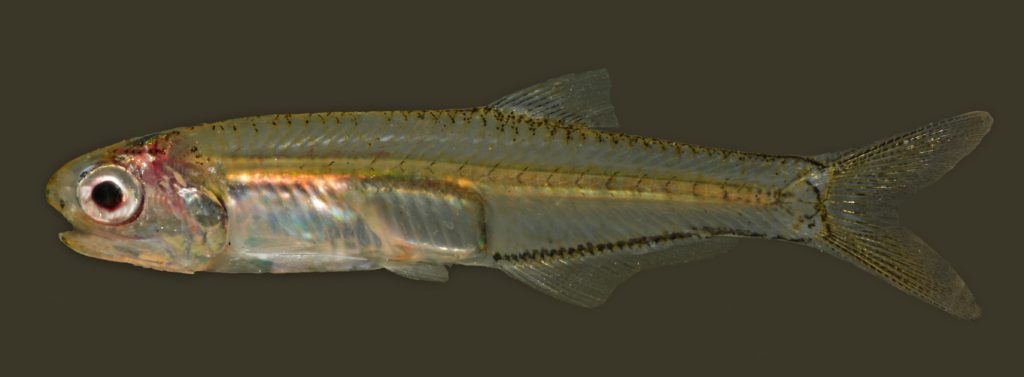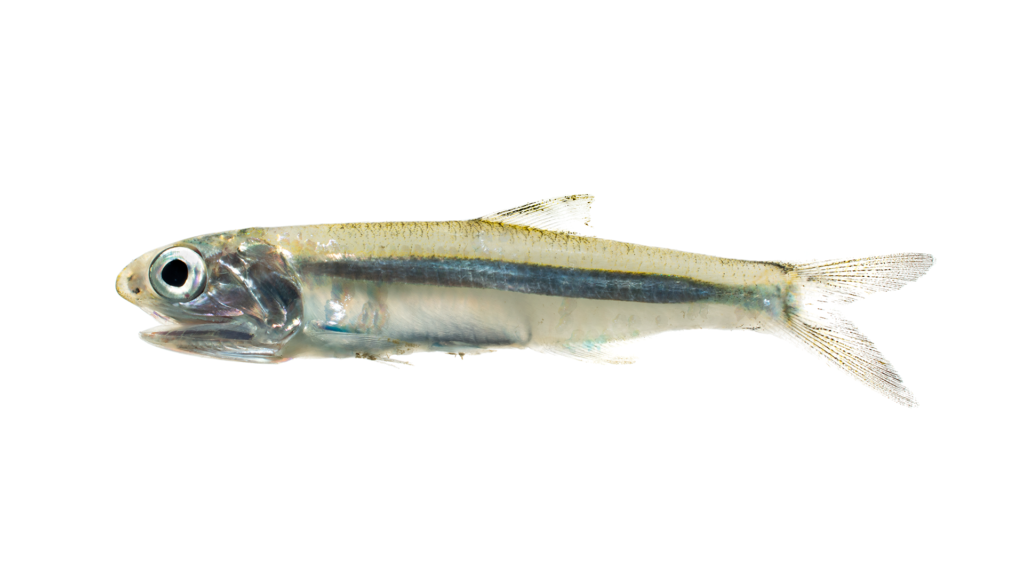By the NCFishes.com Team
Engraulidae is a small family comprising six species in North Carolina (Table 1). Their common name, anchovy, is possibly from the Spanish word anchova, but the term’s ultimate origin is unclear (https://en.wiktionary.org/wiki/anchovy, accessed December 18, 2020). North Carolina’s anchovies range in size from about 100 mm Total Length for Bay Anchovy and Cuban Anchovy to about 150 mm Total Length for Striped Anchovy (Munroe and Nizinski 2002).
| Scientific Name/ American Fisheries Society Accepted Common Name | Scientific Name/ American Fisheries Society Accepted Common Name |
|---|---|
| Engraulis eurystole - Silver Anchovy | Anchoa mitchilli - Bay Anchovy |
| Anchoa hepsetus - Striped Anchovy | Anchoa cubana - Cuban Anchovy |
| Anchoa lyolepis - Dusky Anchovy | Anchoviella perfasciata - Flat Anchovy |
We are not aware of any other common names applied to this family, except for calling all of them anchovies. But as we have learned, each species has its own scientific (Latin) name which actually means something (please refer to The Meanings of the Scientific Names of Anchovies, page 9) along with an American Fisheries Society-accepted common name (Table 1; Page et al. 2013).
Anchovies form large schools of fish that feed on zooplankton. In North Carolina they may be found in all coastal basins, nearshore, and offshore (Tracy et al. 2020; NCFishes.com [Please note: Tracy et al. (2020) may be downloaded for free at: https://trace.tennessee.edu/sfcproceedings/vol1/iss60/1.] All species are found in saltwater environments (Maps 1-5), but Bay Anchovy is a seasonal freshwater inhabitant in our coastal rivers as far upstream as near Lock and Dam No. 1 and Castle Hayne (Cape Fear basin), Jacksonville (White Oak basin), New Bern (Neuse basin), Williamston (Roanoke basin), and Cannon Ferry (Chowan basin) (Map 3) (Tracy et al. 2020) [Note: see Supplemental Maps 1-3, page 10, showing North Carolina’s 100 counties, 21 river basins, and 4 physiographic regions.] No anchovies are found further west than these known locales.

The identification of anchovies is relatively straight-forward, but often requiring the use of a compound microscope. Key characteristics for their proper identification include the length and shape of the maxillary bone; length and positioning of the pseudobranch; and positioning of the anus relative to the anal fin origin and pelvic fin tips (please refer to the Identification Key to the Species of Anchovies (Family Engraulidae) in North Carolina.

If you have troubles with your identifications, just send us (https://ncfishes.com/contact/) an e-mail and include as many quality digital photographs as you can along with all the pertinent locality descriptors so that we will know from where the fish came.
Well done 😉
Great content.